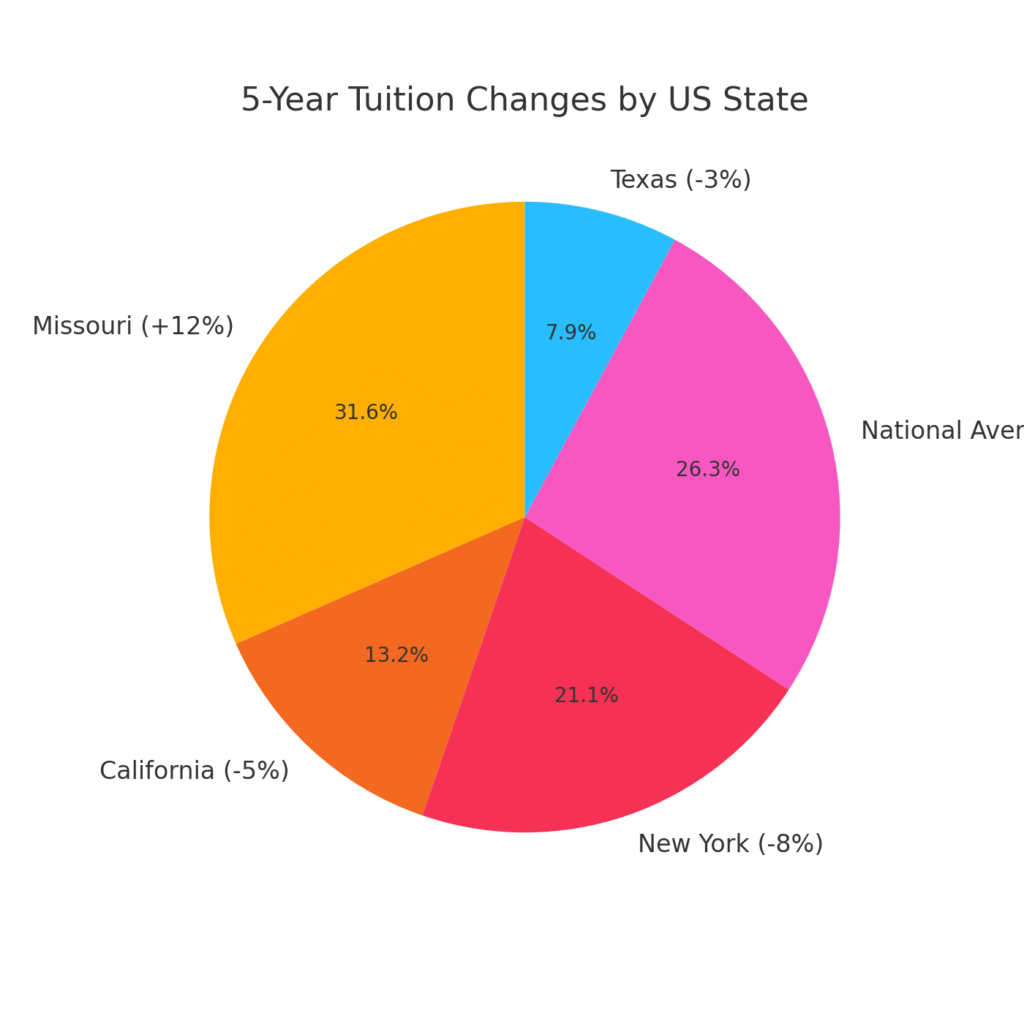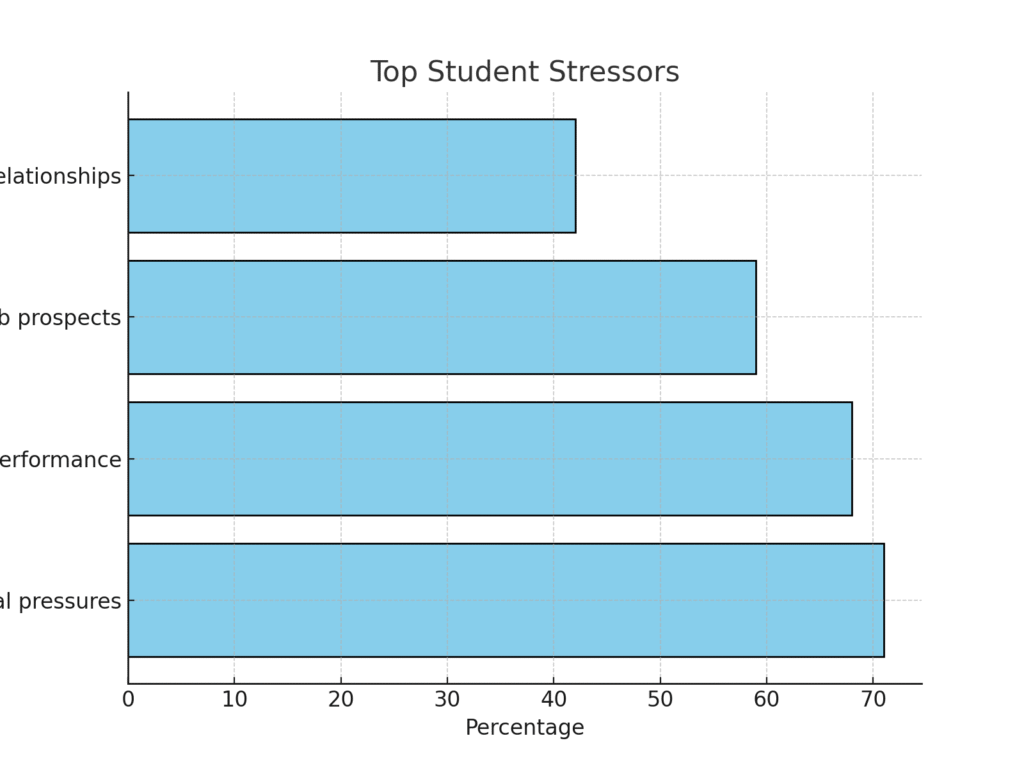College tuition has surged 169% since 1980—while inflation rose just 107%. Today’s students face a financial war on two fronts: skyrocketing tuition and relentless inflation. This perfect storm threatens to make higher education inaccessible for millions. But understanding the crisis is the first step toward surviving it.
1. The State of Tuition Inflation: By the Numbers
Historical Trends: An Unstoppable Climb
- 8% average annual tuition inflation vs. 3% general inflation
- College costs double every 9 years at current rates
- Since 2000: 145% tuition increase in US, 130% in UK (3x wage growth)
Tuition vs. General Inflation (1980-2025)
| Year | Avg. Tuition (US) | CPI Inflation Index |
|---|---|---|
| 1980 | $9,438 | 82.4 |
| 2000 | $15,518 | 172.2 |
| 2025 | $38,100* | 310.5* |
Projected. Sources: NCES, BLS, College Board
2025 Projections: The Crisis Deepens
- UK: £9,535 fees (+3.1%), equivalent to just £5,867 in 2012 value (40% erosion)
- US: $24,920 (public in-state), $44,090 (out-of-state), $58,600 (private)
- International students: Facing 15-25% premium at top universities
Regional Variations: Winners and Losers

2. Why Is College So Expensive? The Root Causes
3 Culprits Fueling the Crisis
- Administrative bloat
Non-teaching positions grew 60% faster than faculty since 2000 - Amenities arms race
Luxury dorms, climbing walls, and sports facilities that increase costs but not educational value - Policy failures
- UK’s 8-year tuition freeze ending
- US state funding cuts averaging 16% per student
- “Discount illusion”: 45% “scholarships” are just price manipulations shifting costs to full-pay students
“Universities are trapped in a prestige competition where spending equals rankings. Students foot the bill for facilities they don’t need.”
- Dr. Elena Rodriguez, Higher Education Economist
3. The Inflation Double Whammy: Beyond Tuition
Student Living Cost Breakdown (2025)
| Expense | Avg. Monthly Cost | % Increase Since 2020 |
|---|---|---|
| Accommodation | $750 | 28% |
| Food | $420 | 32% |
| Textbooks | $180 | 41% |
| Transportation | $210 | 26% |
| TOTAL | $1,560 | 31% |
60% of students report loans cover <50% of actual living expenses, forcing:
- 79% to work >20 hours/week
- 34% to skip meals regularly
- 28% to consider dropping out
4. Student Impact: Debt, Dropouts, and Mental Health
The Debt Trap in Numbers
- Average US grad debt: $37,000 (up from $20,000 in 2006)
- UK repayment burden: 40-year loans for 75% of students
- Consequences:
- 43% delay homeownership
- 31% postpone starting families
- 29% avoid entrepreneurial ventures
The Mental Health Crisis
A 2024 Student Wellbeing Survey revealed:

“I work 35 hours weekly at a warehouse while studying engineering. Last month I had to choose between textbooks and insulin. This isn’t education – it’s survival.”
- Marcus T., University of Michigan student
5. Student Survival Toolkit: Beating the System
6 Financial Hacks That Actually Work
- ROI-Focused Degrees
Top programs with <2-year payback:
- Computer Science (median salary: $85,000)
- Nursing ($75,000)
- Engineering ($80,000)
- Avoid programs with >5-year payback periods
- The Transfer Loophole
Complete gen eds at community college ($3,860/yr) then transfer to university:
- Savings potential: $21,000+ for bachelor’s
- 89% graduation rate for strategic transfers
- Scholarship Mining
Where to find unclaimed funds:
- Departmental awards (45% go unused)
- Industry associations (e.g., IEEE for engineers)
- Local community foundations
- Pro tip: Apply to 3+ with customized essays
- Accommodation Chess
- Book 10+ months early: 17% savings
- Opt for all-inclusive utilities
- Consider “micro-apartments” (23% cheaper)
- Textbook Rebellion
Alternatives saving $1,200+/year:
- Open Educational Resources (OER Commons)
- Library reserve copies
- International editions (70% cheaper)
- Previous-gen e-books- Income-Contingent Planning
Use repayment calculators to:
- Compare countries (UK vs US vs Australia)
- Model career-switch impacts
- Identify forgiveness programs
Global Strategies: Lessons from Abroad
Comparative Higher Education Models
| Country | Tuition Model | Avg. Debt at Graduation | Repayment Threshold |
|---|---|---|---|
| Germany | Free (public unis) | €0 | N/A |
| Australia | Income-contingent loans | AU$24,770 | AU$48,361 |
| UK | £9,250+/year | £45,000 | £25,000 |
| US | Varies by state | $37,000 | Varies by plan |
Action Item: Have you ever Considered 1+ years abroad where tuition is lower (e.g., Germany saves $35,000/year)
6. Institutional Solutions: Fixing a Broken Model
Universities Fighting Back
- Efficiency taskforces: 40 UK universities sharing administrative services (saving £4M/year)
- Tech transformation:
- AI advisors handling 80% of routine queries (reducing staff costs 30%)
- VR labs replacing $500,000 physical equipment
- Resource revolution:
- Open Educational Resources saving students $1.2B/year
- Z-degree programs with zero textbook costs
Policy Levers That Could Work
- “Skin in the game” laws – Schools repay 5% of defaulted loans
- Transparency mandates – Publish real graduate earnings by program
- Maintenance loan reform – UK loans covering actual living costs
7. Future Outlook: The Coming Education Revolution
3 Disruptive Forces
- AI education platforms
- Georgia Tech’s AI tutor handles 10,000+ students simultaneously
- 73% pass rates vs 74% human-taught
- Micro-credential surge
- IBM: 50% of employees will be “skills-first” hires by 2027
- Google certificates now accepted as degree equivalents
- Policy time bombs
- UK maintenance loan review due 2026
- US Pell Grant expansion in 2025
Tipping Point Prediction:
“By 2027, 30% enrollment drop unless costs reined in. Universities ignoring this face extinction.”
- Global Higher Education Trends Report 2024
Conclusion: Turning Crisis into Opportunity
The tuition inflation crisis isn’t just about money—it’s about preserving education as an engine of social mobility. While institutions and policymakers must address systemic issues, students armed with financial literacy and strategic approaches can still win.
3 Immediate Actions You Can Take:
- Calculate your program’s true ROI using the [Department of Education College Scorecard]
- Join the #FixStudentFunding campaign at studentsunited.org
- Download our Student Financial Survival Kit (free templates for scholarship applications, budget planners, and loan appeal letters)
“Education shouldn’t be a debt sentence. By sharing knowledge and demanding reform, we can turn the tide on soaring education costs and restore higher education as the great equalizer it was meant to be.”

